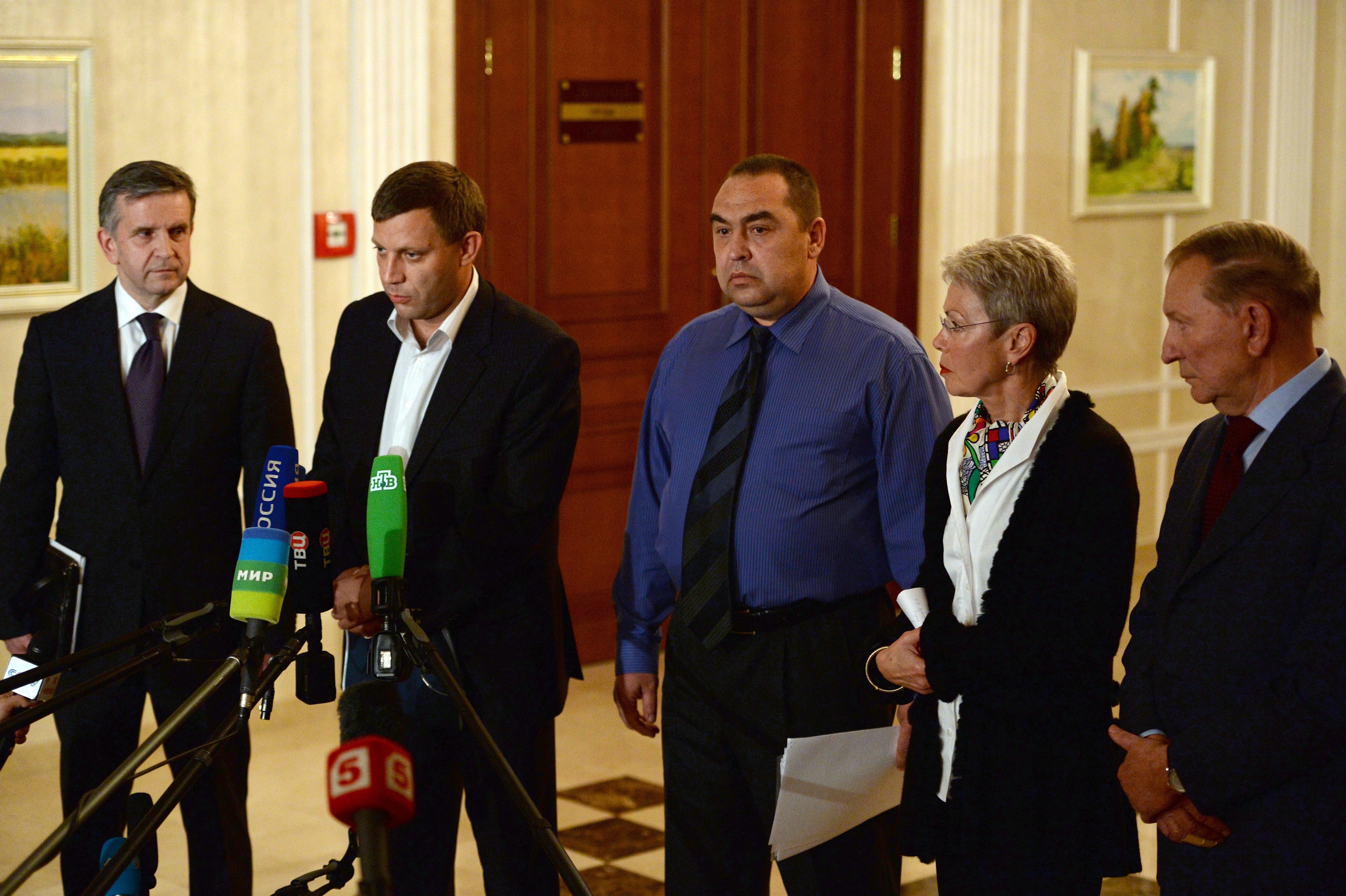
Armistice in Ukraine Leaves Part of Donbas Under Russian Control (Part Two)
Publication: Eurasia Daily Monitor Volume: 11 Issue: 159
By:

On September 5, Ukraine, Russia, the Organization for Security and Cooperation in Europe (OSCE) and leaders of the Moscow-backed separatist “governments” signed an armistice agreement in Minsk. The armistice protocol’s Point 4 envisages a “permanent monitoring [of the situation] along the border between Russia and Ukraine,” within a “security zone to be created in border areas of Ukraine and Russia,” and under “verification by the OSCE” (osce.org, September 7; and see Part One of this article in EDM, September 10).
Ukraine has insisted all along on international arrangements for supervision of that border, so as to stop the flow of Russian arms and fighters into Ukraine’s territory. Kyiv regards effective border control as a sine qua non precondition to a genuine armistice. At present, Russia’s proxies in the Donetsk and Luhansk provinces control an estimated 400-kilometer stretch of what is legally the Ukrainian side of that border. Ukraine and the OSCE both hope to see a 500-strong OSCE border observation mission being deployed.
Point 4’s general formulations leave a great deal of room for subsequent negotiation, on two levels: between Russia and Ukraine bilaterally, and between Russia and other players within the OSCE. The geographical extent of the monitoring arrangements, reciprocal access (if any) of Russian and Ukrainian personnel to each other’s side of the border, definition and operation of the proposed security zone (and on which side of the border), and the relationship between national border monitoring and OSCE verification of same, will all have to be spelled out.
Russia can be expected to try inserting the Donetsk and Luhansk secessionist authorities in some ways (perhaps symbolically) into such a border monitoring process, so as to obtain at least a modicum of international acceptance of those authorities.
Under the OSCE’s ground rules, its Permanent Council will have to approve the mandate for a border monitoring and/or verification mission of the organization. This will have to be negotiated with Russia in all technical details: the mission’s personnel (numbers, composition by countries), financing, the duration and prolongation of terms, as well as the technical equipment to be authorized for this mission are all up for negotiation with a veto-wielding Russia inside the OSCE.
The immediate precedent is not encouraging in this regard. In June, the OSCE deployed a small (apparently, a dozen or less) observer group on the Russia-Ukraine border at two crossing points (initially three, reduced to two points). Whether this group would be allowed to use an unmanned aerial vehicle (UAV) for border supervision, was and remains a matter of negotiation with Russia. Evidently, the OSCE’s presence at those points has had no bearing on the massive cross-border flows of Russian arms and personnel into Ukraine. The United States and the North Atlantic Treaty Organization (NATO) (and even some mass media reporters) documented and publicized such cross-border movements; but the OSCE did not and, probably, could not have done so, given this organization’s specific modus operandi.
More distant precedent looks similarly discouraging in this regard. In Georgia in 2003, Russia used its veto to unilaterally terminate the OSCE’s Border Monitoring Mission (BMO), when the BMO turned out to be inconvenient for Russia. In 2008, Russia forced the OSCE’s mission out of Georgia’s South Ossetia territory. Until that point, Russia had micromanaged that mission, down to the number of personnel and jeep vehicles it was allowed to use (no helicopter ever allowed).
Points 5, 8, 11, and 12 of the armistice protocol are concerned with humanitarian and legal matters: reciprocal exchanges of prisoners and detained persons, measures to improve the humanitarian situation in Donbas, working out an economic recovery program for Donbas (no specification of intent on either point), and safety guarantees to participants in Contact Group consultations (meaning immunity for leaders of armed secessionist forces, whom Ukraine has hitherto designated as terrorists).
Point 10 calls for “removing the unlawful armed formations, [their] heavy equipment, as well as paramilitary fighters [boyeviki] and mercenaries, from Ukraine’s territory.” This straightforward formulation looks like a sound basis for implementation measures in a good-faith process, which this process, however, is not.
Moscow can be expected to use its Donetsk and Luhansk protégés in attempting to discuss what exactly constitutes Ukraine’s territory at present, and what armed formations would be defined as unlawful.
As in the earlier and ongoing frozen conflicts (Transnistria, Abkhazia and South Ossetia, Karabakh), so the Donetsk and Luhansk “people’s republics” have proclaimed themselves to be states, with claims to specific territories, parts of which they effectively control. The “republics” of Donetsk and Luhansk have also declared their armed formations to be “armies”; not merely to indulge in vainglory, but as part of attempts to obscure the Russian sources of their weaponry and skilled personnel, and redefine the paramilitaries from Russia as local residents of the Donbas region.
Russia insists on negotiations in this Contact Group to be upgraded from the current, procedural level to a “substantive” political level. In physical possession of territory inside Ukraine, the Russian side (Moscow with its local protégés) will enjoy an upper hand in the follow-up negotiations.




